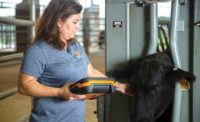Manufacturing News
Crises still drive food safety in U.S.

Michael Taylor, co-chair of the Stop Foodborne Illness Board, traced the development and future of food safety at FSS 2019.
When it comes to food safety, Michael Taylor, former deputy commissioner for food for FDA and present co-chair of the Stop Foodborne Illness Board, has seen it all (or most of it) from having served both publicly and privately. Taylor, a frequent presenter at Food Safety Summit, suggested that in spite of all the technology, collaboration and education to improve food safety, crisis management still drives changes.
His FSS keynote summarized the past 25 years of food safety that he witnessed as a regulator, and its present and future state now that he’s committed outside the government to food safety in the public interest. Generally speaking, despite a checkered past and a spotty present with recalls (e.g., the recent romaine recall), food safety is evolving toward a higher plane—provided some kinks can be worked out in the field, literally speaking.
Has the past really stimulated food safety progress? “The progress historically has been driven largely by the response to crises,” says Taylor. He noted the Jack in the Box E. coli O157:H7 outbreak in 1992 and 1993, which killed four and seriously injured 500 people, many with lifelong HUS damage. “It was a huge wake-up call because at the time the USDA policy was that the inspection program was not responsible for pathogens,” says Taylor.
“Fast forward to the spinach outbreak in 2006. There was significant loss of life and injuries to people, but also the devastation of the demand for spinach. In response, the California LGMA (Leafy Green Handler Marketing Agreement) was formed.” The industry came together in the absence of federal standards (pre-FSMA) to figure out how to solve these problems, creating standards and working with state governments.
FSMA came out of a series of events: the produce outbreaks, Peanut Corporation of America Salmonella outbreak (and other peanut problems) and melamine in dairy products, says Taylor. “We have the framework of preventive controls … but there’s an enormous amount to be done by industry and government to see that these best practices are implemented across all our diverse food system.”
Taylor broke down work to be done into three categories: comprehensive implementation of best practices across diverse supply chains, real-time trace back and forward (new technology can help), and establishment of rules governing the physical proximity of produce growers and animal agriculture, an issue about which Taylor was clearly adamant. “That quite clearly remains a significant hazard.”
Down on the farm
On the proximity issue, Taylor says cooperation is lacking between producers—and between producers and federal agencies.
He showed an image of a feedlot that he took in Arizona near the Yuma romaine outbreak. “You can see the feedlot on the slight rise of land immediately adjacent to and above the structure you see down at the lower left, [which] is the principal irrigation canal that’s taking water all throughout a major growing area of leafy greens. If that’s not a hazard that needs to be addressed in a rigorous way, I don’t know what is,” says Taylor.
To improve food safety, LGMA established larger buffers between feedlots and produce fields, but according to Taylor, these changes aren’t an adequate solution. He asked whether a mile buffer from an 80,000 head feedlot is adequate to protect leafy greens from contamination.
Hazard analyses need to be done but the best that can happen is: producers must sample and test their own products because even the FDA is not allowed on the feedlots to do any extensive soil/water sampling and testing; the issue is outside FDA’s jurisdiction.
“There’s no extensive sampling going on just privately between the growers and the feedlot operators, so we’re dealing really with a massive hazard, and we’re trying to manage that risk in scientific ignorance of what the actual hazard is and ways that it can be controlled—if it can be controlled at all,” says Taylor.
In looking at the future, he says that consumers with rising expectations will drive food safety, simply not buying products that are perceived as not safe. New epidemiological (epi) tools will assist in diagnosing outbreaks more quickly, and social media will make or break food companies as bad news is shared instantaneously.
He cited three other ways that food safety will improve: continuing industry innovation, preventive government oversight and an alignment on goals and strategies by everyone in the food chain. “We know we need comprehensive preventive strategies; continuous improvement is recognized as a necessary element of a food safety system. We need strong food safety cultures as a foundation for sustained good performance.”
Looking for a reprint of this article?
From high-res PDFs to custom plaques, order your copy today!






